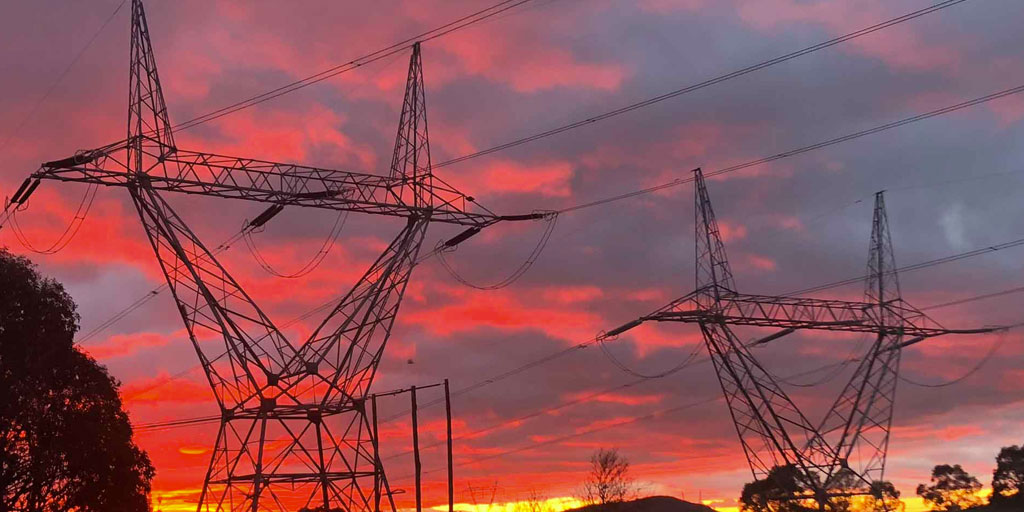NSW New England renewable energy zone work begins
New electricity transmission infrastructure in north-east New South Wales could help to unlock a new renewable energy zone.

ARENA has announced funding for TransGrid to assess the feasibility of building new transmission infrastructure in the NSW New England region to accommodate more renewable energy generation.
The New England Transmission Infrastructure study will develop a plan to construct new links between Tamworth and Gunnedah, including a high voltage line and new substation that would allow 1400 MW of new renewable energy generation projects to connect to the grid within three to five years.
The upgrades are needed with current transmission nearing capacity, which is holding back development of the wind and solar projects that will be needed to replace fossil fuel plants as they retire.
The project is a stepping stone towards the New South Wales Government’s vision to make the New England region a renewable energy powerhouse. With capacity to power 3.5 million homes with 8,000 MW of renewable generation capacity, the recently announced New England renewable energy zone would be nearly three times larger than the Central West Orana precinct announced in late June.
READ MORE – FUNDING ANNOUNCED TO KICKSTART CENTRAL WEST RENEWABLE ENERGY ZONE
ARENA is contributing $995,000 towards TransGrid’s $3.45 million study, which is also setting out to demonstrate a new way of developing transmission infrastructure that unlocks more private investment. The study could help to inform regulatory changes and reforms to the way the market operates, which were raised as key challenges in a report that assessed the barriers to new renewable energy zones being developed.
TransGrid hopes the project will help to deliver a new model for building investment in the National Electricity Market as an alternative to the current lengthy regulatory process.
As part of the New England study, TransGrid is seeking expressions of interest from companies that operate large scale renewable generators in the region. Participants are being asked to competitively bid for a service fee to connect to the new transmission infrastructure being developed, which in return will provide guaranteed access. Submissions for the EOIs to the NETI close on 29 July 2020.
Network transformation predicted to deliver power bill savings
According to TransGrid’s recently released Transmission Annual Planning Report, new transmission that allows new generation to connect to the grid will result “in lower wholesale prices and a better ability to meet peak demand, as coal power generation is phased out.”
Launching the report, TransGrid’s Head of Network Planning Andrew Kingsmill called for a commitment to develop new renewable generation and improve interconnection.
“Establishing renewable energy zones and integrating new, low-cost generation will increase competition, helping to maintain downward pressure on the wholesale electricity market price and reduce electricity bills,” Mr Kingsmill said.
As well as leading feasibility studies into the New England and Central West Orana proposals, TransGrid is involved in the HumeLink transmission upgrades in southern NSW and the construction of additional interconnection with South Australia and Queensland.
ARENA is supporting the studies into the two renewable energy zones under its focus on improving the integration of renewables into the electricity system.
ARENA CEO Darren Miller said the projects will unlock more renewable energy projects in New South Wales.
“Together, these studies will provide two test cases for developing future renewable energy zones and the transmission infrastructure needed to support them,” Mr Miller said.
“The New England transmission infrastructure will host and underpin a significant amount of new renewable energy capacity for the NSW electricity market, while allowing TransGrid to test and validate new commercial models,” Mr Miller said.
Both the New England and Central West renewable energy zone projects are supported by the NSW Government, which has described the proposals as vital to making electricity more reliable and affordable as the state’s existing power stations are retired.
In an electricity strategy released in late 2019, the NSW Government said its plan to develop three renewable energy zones could support “up to $23 billion of private sector investment in our regions and up to 2,000 construction jobs each year.”
Work has begun assessing the feasibility of the Central West Orana zone near Dubbo, which is expected to unlock about 3,000 MW of capacity for new renewable energy projects by the mid-2020s.
LIKE THIS STORY? SIGN UP TO OUR NEWSLETTER

ARENA